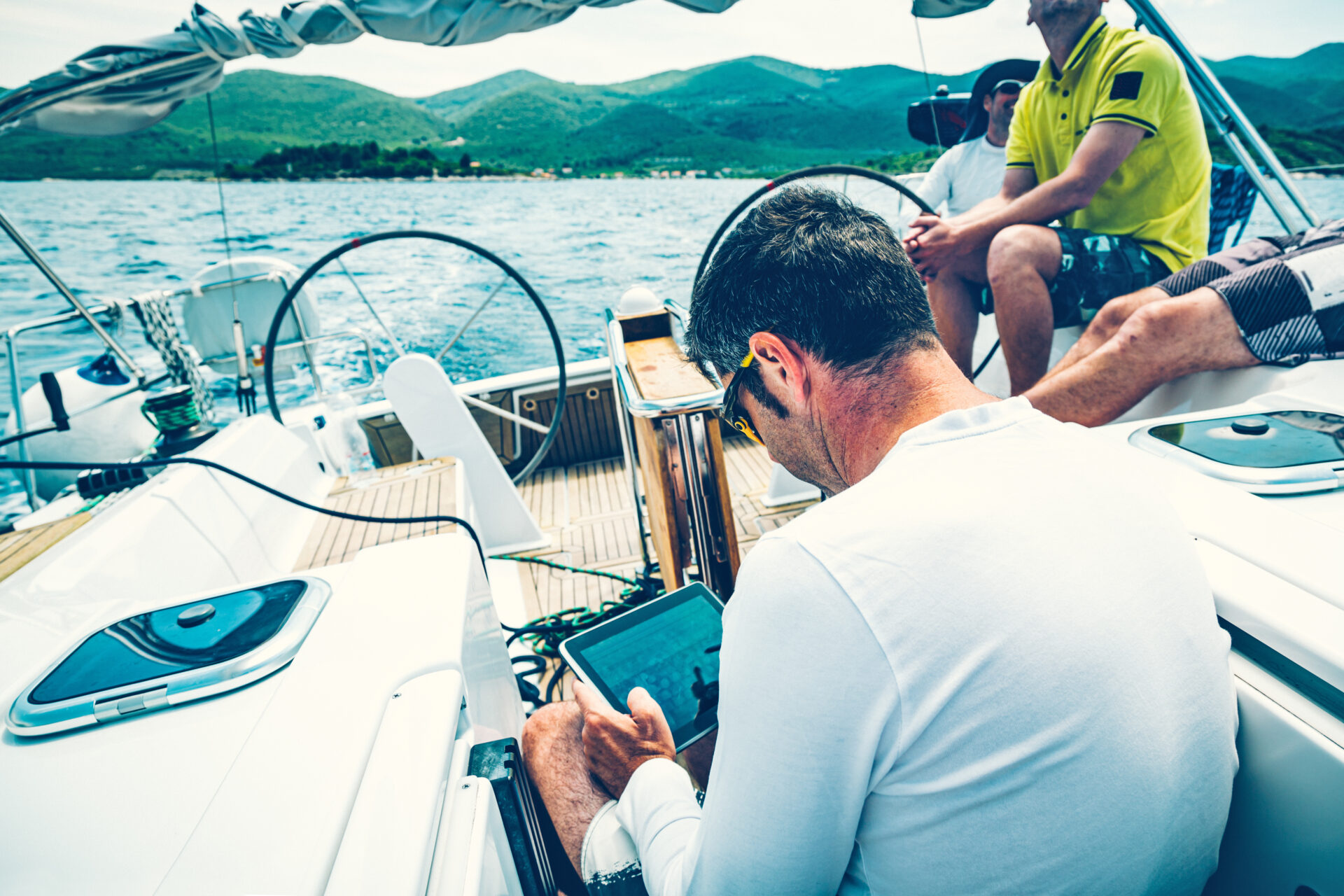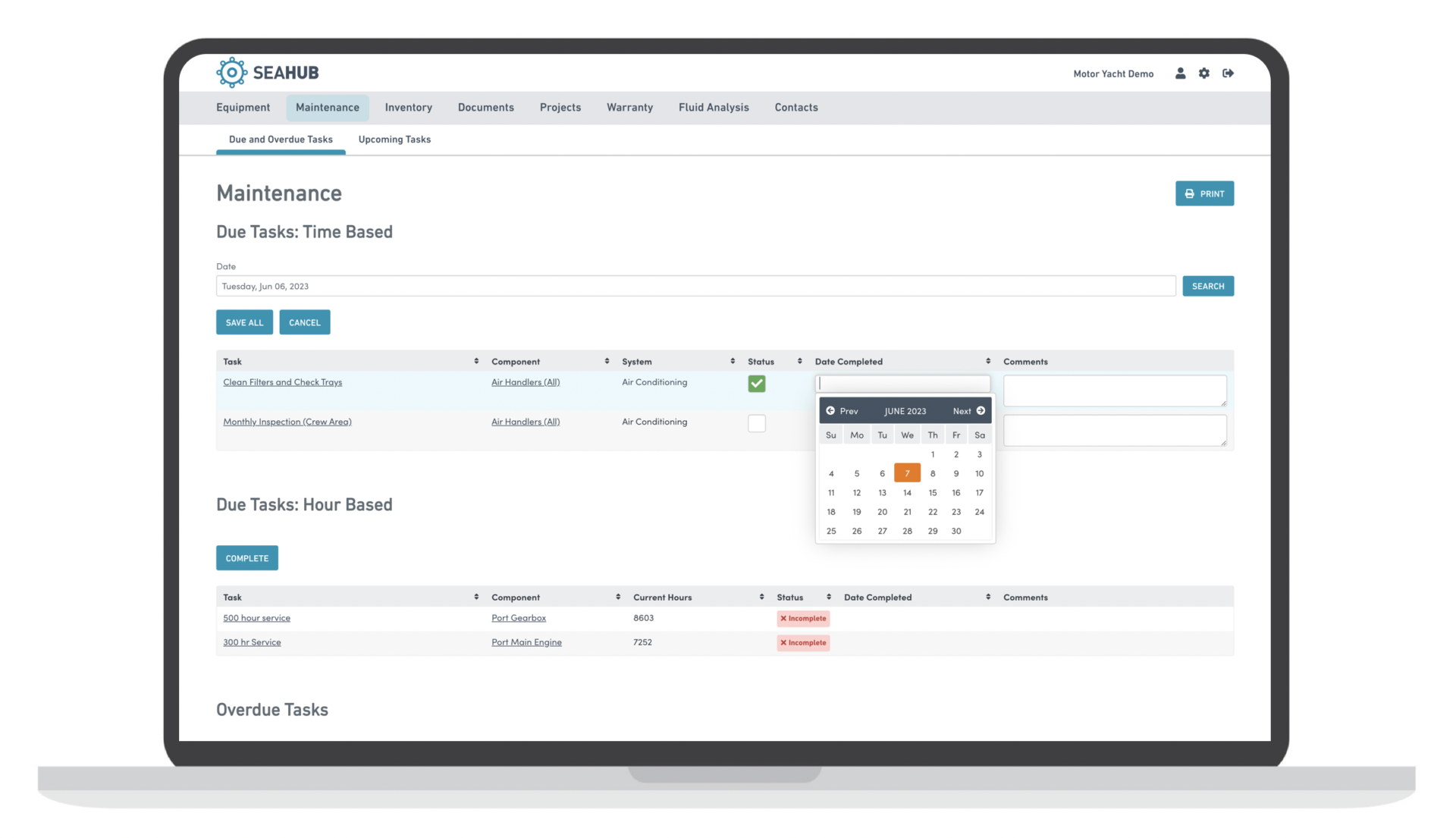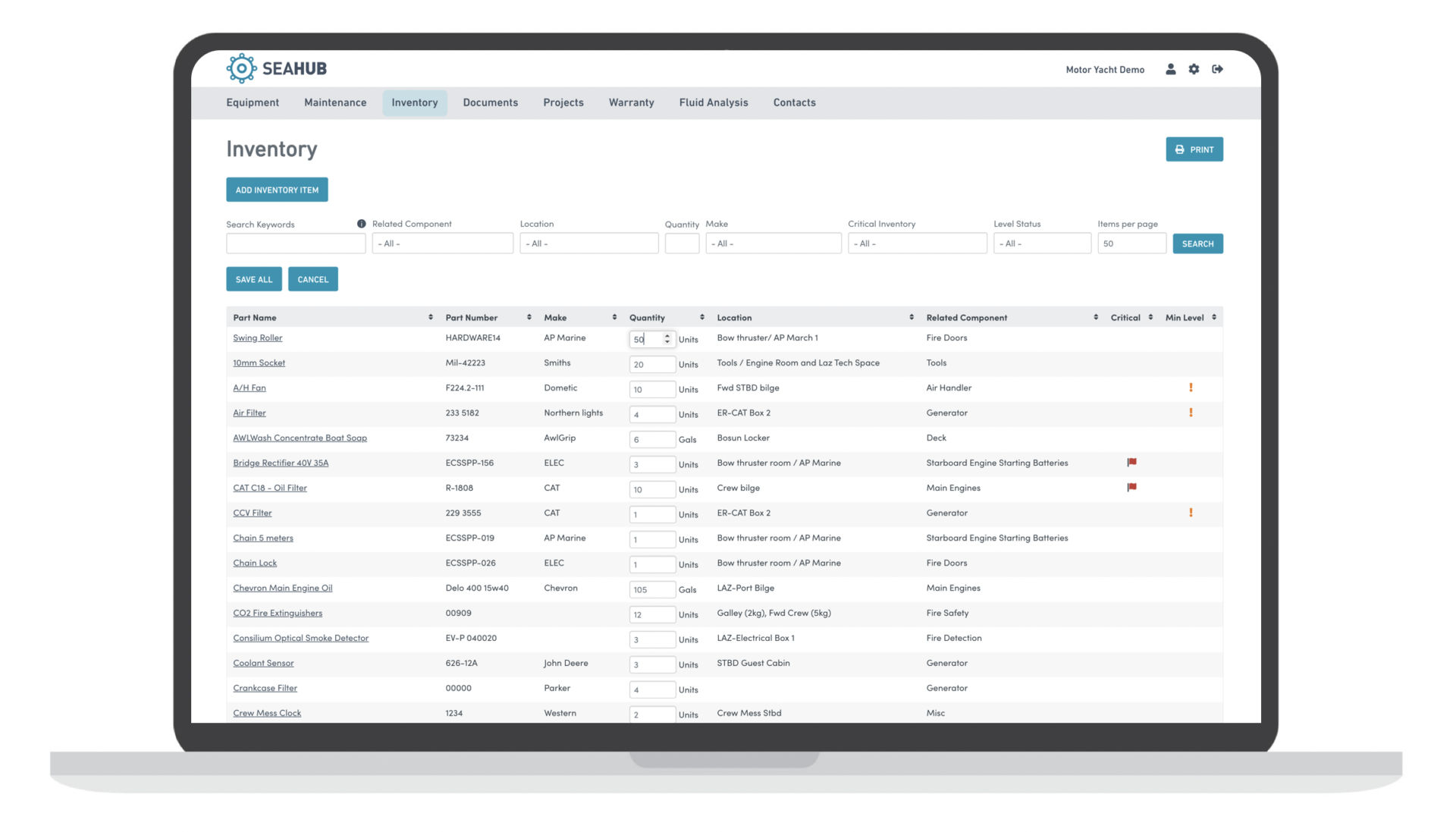In the first of their monthly blogs, Yacht Maintenance Software pioneers, Seahub, share some of their expert tips and insights on Planned Maintenance Systems (PMS) and the main considerations when employing this type of software onboard your Superyacht. From recognising the unique requirements of the vessel, to the importance of references and feedback, Seahub break down the process of choosing the right software in an increasingly digitised industry.

Planned Maintenance Systems: 5 things to know before choosing one
The decision to roll out a planned maintenance system (PMS) will inevitably come at some point in time for most Superyachts. As we move away from paper-based records, bespoke software platforms are an ideal alternative that allow record keeping to progress onboard. Employing software is a decision that should involve due diligence as these systems tend to become ingrained in the day to day operation of a vessel.
Many planned maintenance systems offer similar functionality across the board. Differentiating factors are usually the user interface – how a system looks, cross-platform accessibility, support and of course, price. Researching the background and past performance of a PMS provider is going to give you the best chance to land on the right system for your program.
We have assembled 5 things you should know before you jump into bed with a PMS system…
Identify Your Core Requirements
Understanding what you need most out of a system is going to give you the best footing to effectively review a system’s suitability. PMS systems provide dozens of tools which all benefit vessels in different ways and have different levels of importance. Managing maintenance, implementing ISM, organisation of spare parts, documenting standard operating procedures and better shipyard planning can all be reasons to deploy a PMS system.
Establish which features are critical, not-critical and the ones which are simply ‘nice-to-have’ to best compare which system is going to provide the most value.

Prioritise Usability
It is the usability of software that determines whether it will be widely used onboard. Usability is the ease of use of a system of application, which is often determined by its layout, button position and size, colours, fonts, and how it presents information. An excellent way to test usability is to establish a process within a system you are interested in, such as accessing equipment maintenance history.
We test usability by looking at how long it takes to access this information and how many clicks it takes. If one system requires 3 clicks and another system requires 6, a general conclusion can be made that system #1 will require half the time needed daily to manage.
Read More SYC: How Seahub’s Engineering Grant Grew Engineer Jackson Pinney’s Career
Understand Their Support And Development Philosophies
With any good PMS system should come good support. With high crew turn over and rotational positions becoming more common, there will inevitably be a need to lean on a PMS provider for support. Take the time to understand who is behind the company, what their backgrounds are and who is going to be picking up the phone should you need anything.
The future development of the system is a great indicator of how in touch a PMS company is with the needs of the market. Figure out how they handle feedback, how often the system is updated and ask what plans they have for future development.
Turn Over A Few Stones
Referrals go a long way and are effective at gathering first hand feedback from crew in the same position you may be in. Increasingly, platforms such as Facebook and LinkedIn are being used to float questions about experiences with specific platforms or to receive recommendations on which systems are most commonly used for vessels within a certain size range.

“The decision to roll out of a planned maintenance system is significant milestone in improving organisation onboard”
Understand How The System Can Benefit All Departments
Planned Maintenance Systems focus on the delivery of tools to manage maintenance procedures onboard. Some PMS providers have diversified into providing functionality for owners, managers, deck and interior departments. The ability to manage full ISM, or manage all bridge related certificates could be a deciding factor and add real value to a vessel as a whole rather than a tool specifically used by the engineering department.
The decision to roll out of a planned maintenance system is significant milestone in improving organisation onboard. Building a maintenance plan from scratch or migrating from an alternative system both involve working closely with your PMS provider. Understanding the system and the people behind it will ensure you are choosing the best to partner with.
For more Engineering articles, click here.
Sign up to our Newsletter to stay up to date with the latest industry news:






.gif)

.gif)










